How to Create Better LinkedIn Matched Audiences With Vainu Data
LinkedIn is an incredibly popular—and powerful—tool for B2B sales and marketing initiatives, and their Matched Audiences presents a unique way for you to target a specific audience with your LinkedIn ads by, for example, uploading a list of accounts. LinkedIn will then match the accounts in your list to their database, and you’ll start delivering impressions to your target audience. Cool, right?
The only thing that could potentially be a problem in this otherwise simple process is getting your hands on a list of accounts that is appropriately segmented and allows for effective personalization of your LinkedIn advertising. Luckily, Vainu can help with that.
How to use Vainu’s data to create audiences in LinkedIn
A crucial element of making a good list is ensuring that the companies in it have something in common. The companies should all share a characteristic that you have identified as being important. For example, it could be that all of the companies in that list use the same technology. Your subsequent LinkedIn ads should obviously then have personalized messaging taking that shared characteristic into account. But which company characteristics can you use?
With Vainu’s data at your disposal, there are a ton of different characteristics that you could choose from when creating your list—characteristics that go beyond LinkedIn’s available options. Vainu can help you create a list based on technologies that a company uses, its exact industry vertical, or whether it has recently experienced a successful round of funding. Lots of options to choose from!
So, here’s an example of what it could look like if you had identified a target group with great potential, in this case Finnish companies using Magneto, and created a targeted LinkedIn ad accordingly.
Example:
Target group: Companies in Finland using Magento.
LinkedIn ad: “Top 10 tips to get the best out of Magento. Download the ebook.”
The above example is only possible by using company data that goes beyond what LinkedIn offers when creating your list.
However, Vainu and LinkedIn work best together. Vainu’s data can provide you with a list of accounts that is much more granular in nature than what you can get with LinkedIn’s own filters. For example, our proprietary AI-based industry classification system, Vainu Custom Industry provides exact industry verticals, and LinkedIn doesn’t offer any sort of technology data—Vainu does.
When that list has been created and uploaded, LinkedIn’s prowess comes on full display, as LinkedIn enables you to further refine your audience down to an individual level, so you’re not just talking to the right company but the right people.
If you’re someone who’s decided to try to effectively target larger groups of prospects at scale and have therefore adopted an account-based approach in your sales and marketing processes, then these types of focussed LinkedIn ad campaigns are perfect for you. And, if it’s something you want to try, here is our step-by-step guide to using Vainu’s data to create better LinkedIn Matched Audiences.
If you’d prefer a video guide, then we’ve got you covered:
Step 1: Find Your Ideal Customer Profile
Here at Vainu, we often talk about ideal customer profiles. One, because they’ve been incredibly useful for our own business and two, because they’ve been incredibly useful for many of our customers’ business, so, hopefully, they’ll also prove to be useful for you.
Essentially, an ideal customer profile (ICP) is a description of the type of company that would derive significant value from your organization’s offering. As such, an ICP includes descriptive characteristics of those companies that could be playing a role in them deriving value from your product or service.
Now, there are many different types of descriptive characteristics that could be playing a role and used in your ICP. Here’s a few:
- Company Profile
- This could for example be firmographics or technographics, such as industry, location, revenue, or technologies.
- Timing
- Did something change in your target accounts or the market that would make them especially interesting for a highly targeted ad campaign? For example, have they opened a new office or need to move operations away from certain countries?
- Buyer Persona
- Who are the right people to target? Is it logistics managers, HR directors, etc.? You’ll be able to find them on LinkedIn after you’ve matched your ideal companies.
We’ve written extensively about this topic already, so check out our blog if you want to know more about ICPs.
Alternatively, you’re welcome to download our guide to ideal customer profiles. The guide walks you through the practical aspects of finding your ICP in a digestible step-by-step manner.
Step 2: Personalize your messaging
Once you’ve found your ICP, the next thing to consider is the message you want to convey to this ICP segment. Obviously, this message should be crafted in such a way that it resonates with your ICP. That can mean the message is based on the important descriptive characteristics that you found in step 1, such as its company profile, important events that have occurred recently, and/or the buying persona you’re going to target. Here are a few examples to get you started:
Example 1:
ICP: Manufacturing companies that are growing
Message: “Download our guide for scaling up production”
Example 2:
ICP: Companies actively recruiting
Message: “Read how ACME increased their employee satisfaction by 20%”
Your messaging will be dependent on your personal circumstances. Both the uniqueness of your ICP is and what you’re choosing to advertise in the LinkedIn ads play a crucial role.
Step 3: Create a list of target accounts with Vainu
LinkedIn generally recommends your list containing over 1000 companies for Matched Audiences, which means that you might not be able to get quite as granular as you might like. However, with Vainu’s databases containing tens of millions of companies, you should still be able to find your fair share of companies matching your ICP.
Here’s how simple creating a list of companies in Vainu is:
As alluded to earlier, official industry classifications, as well as LinkedIn industries, are often not descriptive enough, which is where Vainu Custom Industry (VCI) comes in. Our solution classifies companies based on their website content by using categories that sales and marketing people understand.
Take 3D Formtech Oy as an example. Below you can see the company’s homepage. What industry tags do you think would be the most appropriate to describe 3D Formtech Oy?
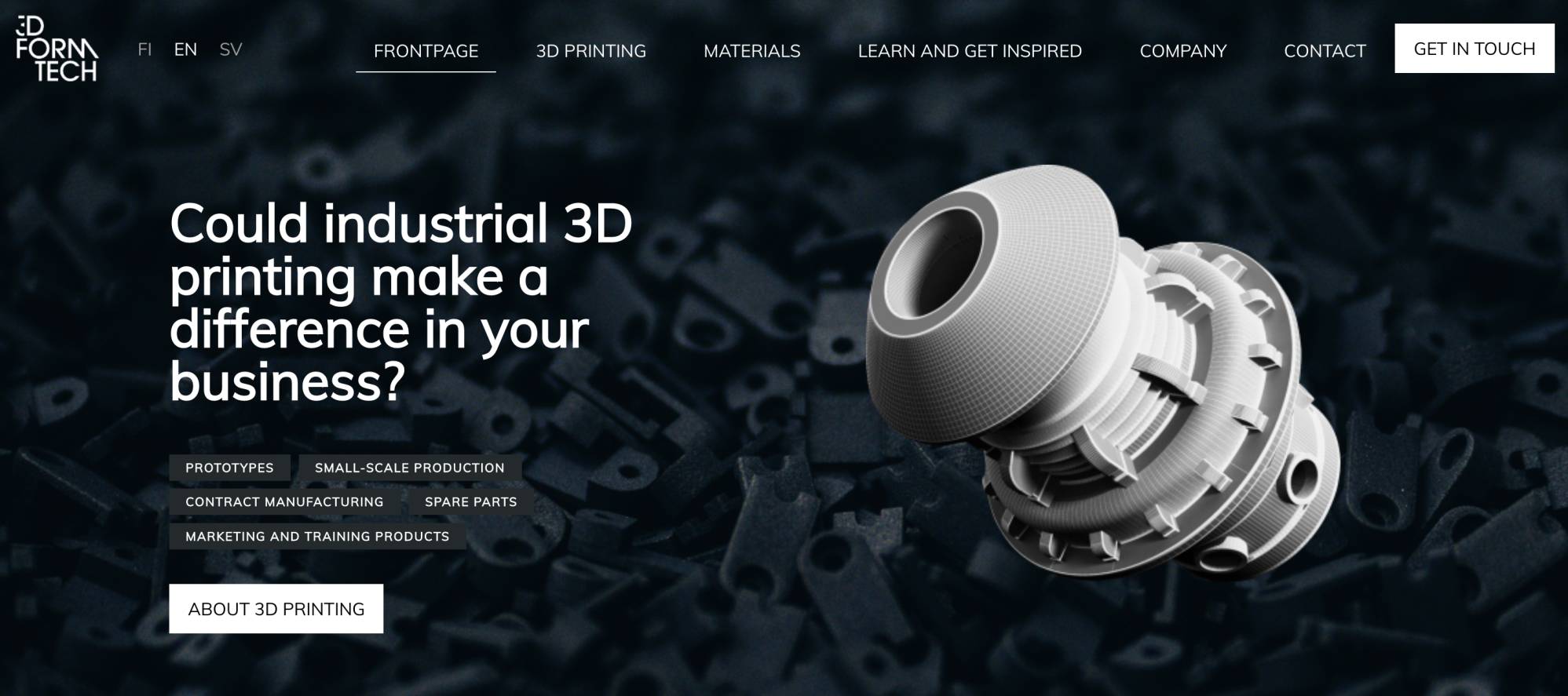
And here are the tags according to ISIC, LinkedIn industry, and VCI industry:
- ISIC: Other manufacturing n.e.c. (3290)
- LinkedIn: Machinery (55)
- VCI: 3D Printing, Manufacturing, 3D Technology
Which of these industry classification systems do you think most accurately describes 3D Formtech Oy?
When you’re done creating your list, just download it as an Excel file.
Step 4: Upload Excel file to LinkedIn
Now it’s time for us to get this list of companies into LinkedIn, so you can start targeting your ICP audience with effective, personalized ads. First, open Campaign Manager in Linkedin, go to Account Assets and choose Matched Audiences.
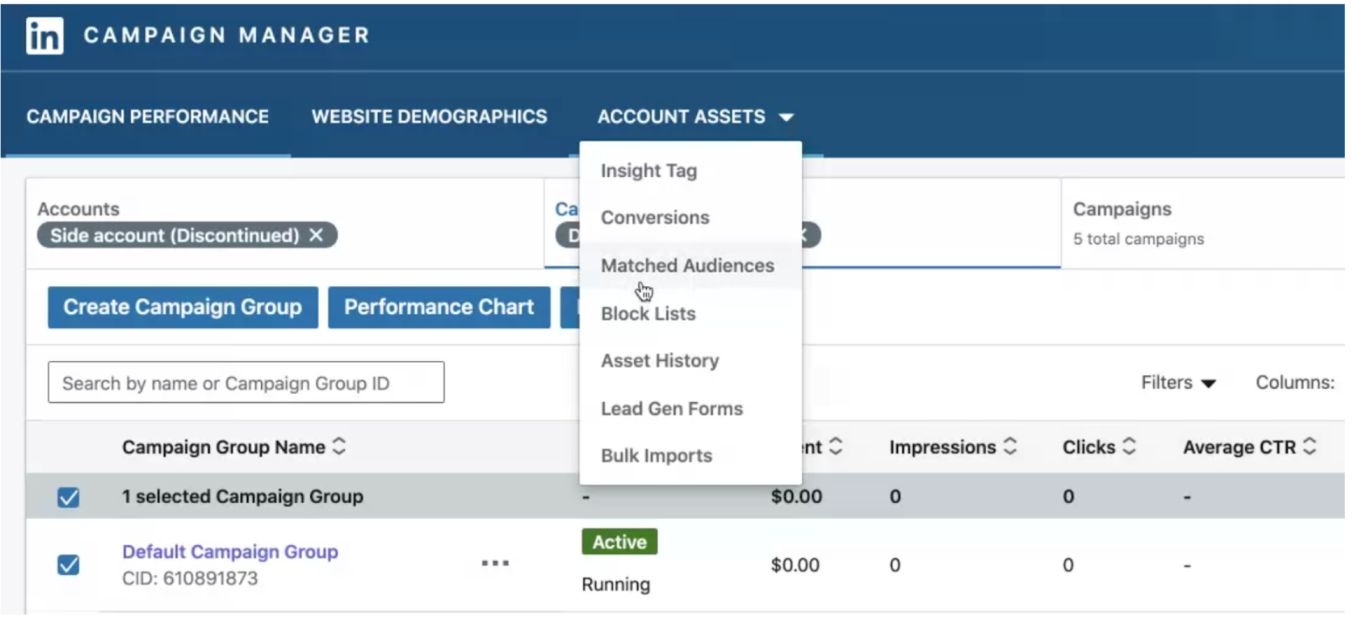
Click create an audience, and then Company/Contact under Upload a list.
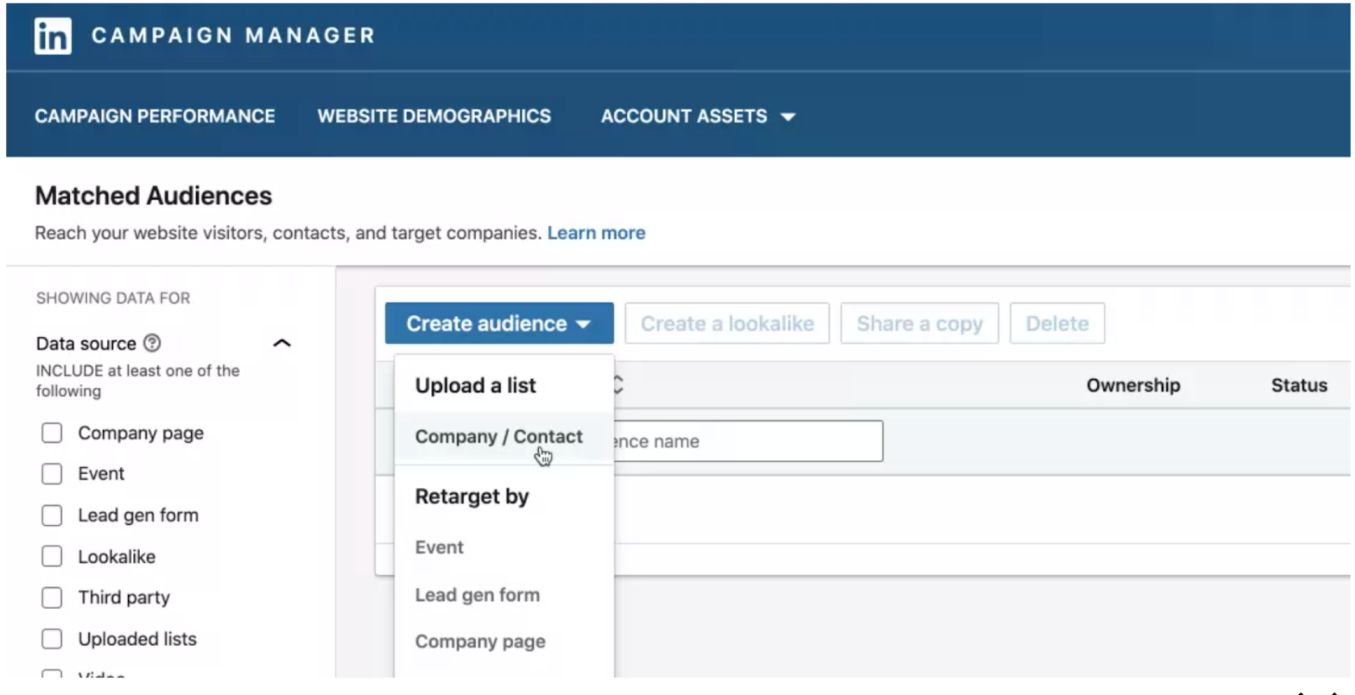
Download the company list template. Looks like this:
.jpg?width=1223&name=Campaign%20manager%203%20(1).jpg)
For LinkedIn to match the companies in your list to the ones in its database, company name and company website are the most important things. Including additional fields will increase the accuracy of the match. Sometimes, company names, brand names etc. can be a bit problematic. Fortunately, Vainu has the website URL and also LinkedIn Company Page URL included in its exports, so matching the companies shouldn’t be an issue.

Download the company list template, combine it with the list you exported from Vainu, and then upload your list.
When you’re done, your audiences will appear here. From there on you can select the kinds of people you want to target.
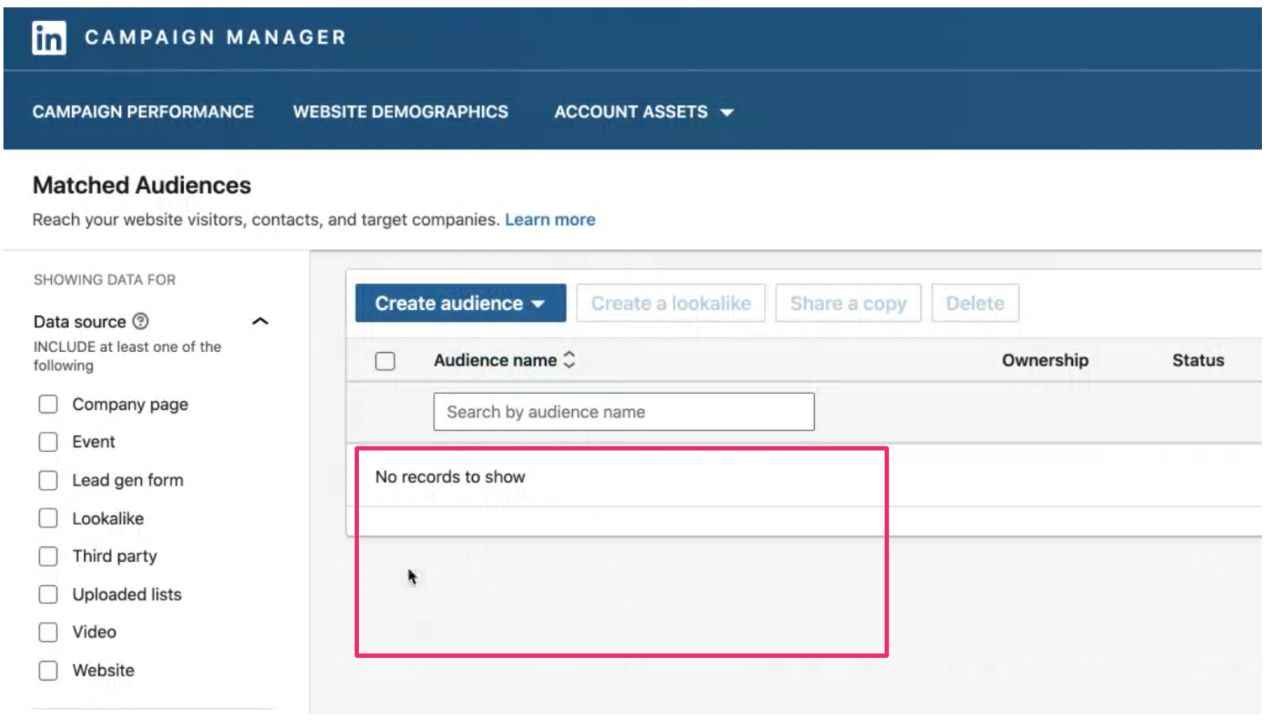
Remember: The size of the list matters. LinkedIn wants to match at least 300 people from the list. So, consider uploading multiple lists and see how they match. You can always delete the audiences you don’t want to use.
You should always choose the company list that gets a high match rate. When LinkedIn has matched your list to a lot of companies, you maximize the potential amount of people you can reach in your ICP.
As an alternative to uploading an Excel file to LinkedIn, you could mass export the list to HubSpot via our Connector, create a list there, and then use that HubSpot list as a LinkedIn Matched Audience list.
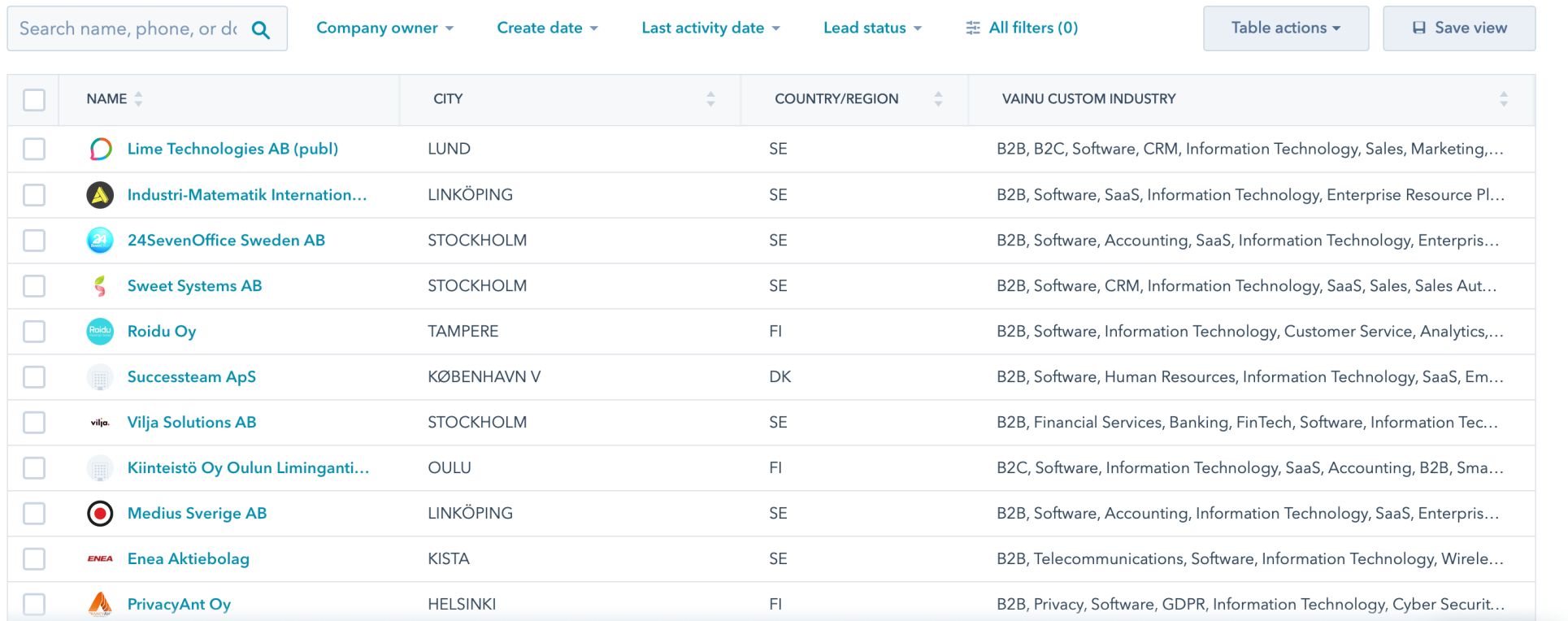
Next steps
Hopefully, you’ve found this blog instructive. If it resonated with you and you want to start creating better LinkedIn Matched Audiences with the help of Vainu, then you might be happy to hear that you can get a free trial and give Vainu a spin for free with no strings attached. If you’ve got any questions, then feel free to reach out via our chat.